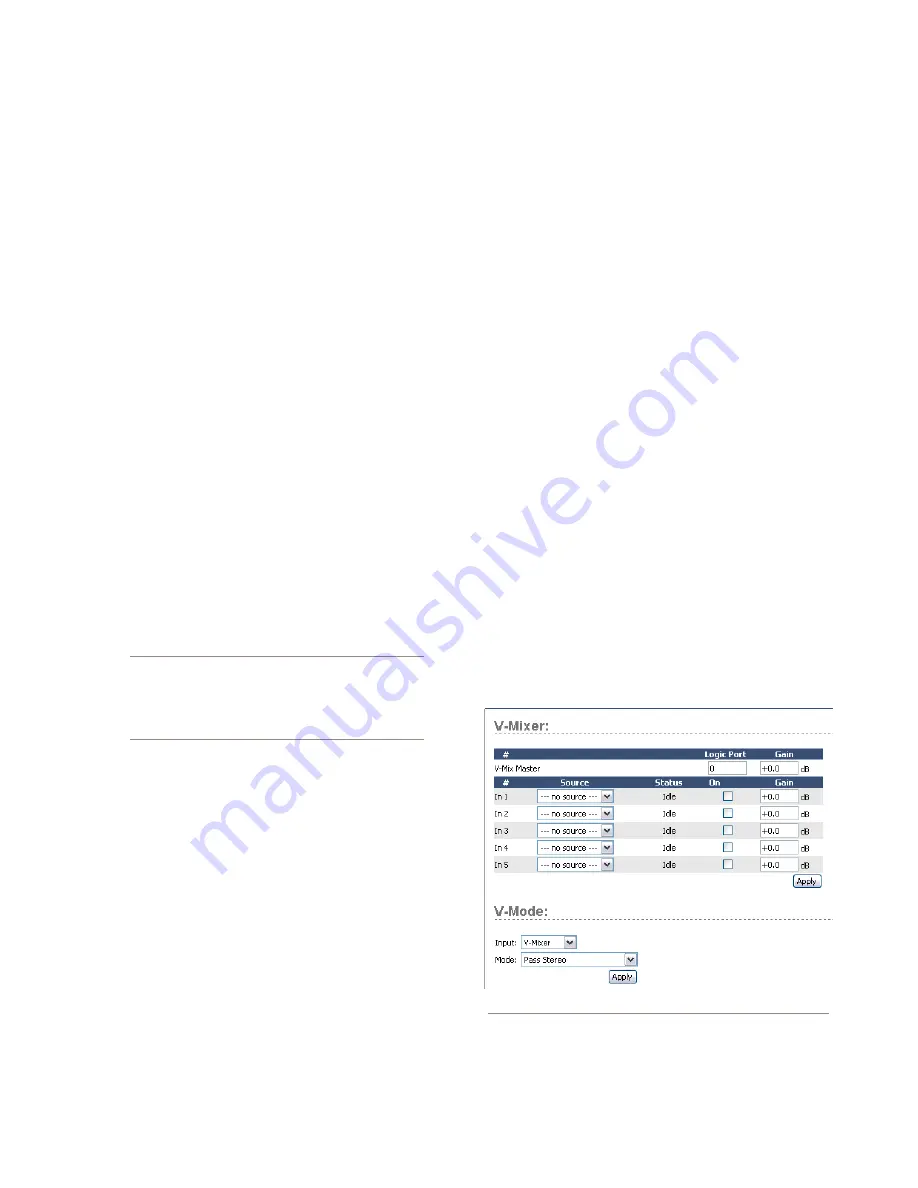
2: I
np
ut
s a
nd O
ut
pu
ts •
1
7
©2012 Axia Audio
streams that can be delivered from your QOR
• to other devices in your Livewire network. See
Chapter 7: Livewire Networking
for more details
on how this works.
local Outputs
The QOR.16 has four stereo analog line outputs and
one AES output. The QOR.32 has 8 stereo analog line
outputs and two AES outputs. These may be configured
to deliver:
»
Local source
(microphone, analog, or AES/EBU
inputs)
»
Backfeeds
to any of the above sources that are
configured as Phone or Codec.
»
Any of the
Program
or
Monitor
feeds that are
created by the QOR. (CR Monitor, Studio Moni-
tor CR Headphones, VMIX, VMODE, etc)
•
Output
- Using the drop-down menu, select the de-
sired source that you want to deliver to your local
output.
•
Output Gain
- The output signal level may be at-
tenuated to provide an optimal level for outboard de-
vices.
The gain range is from -127.5 (off) to 0.0 dB
(unity gain).
CAUTION
- Once you have made a selection
and applied it, audio is immediately delivered to
the QOR output. Be sure to turn down all ampli-
fier level controls to avoid damaging your pre-
cious equipment — especially your ears.
V-Mixer and V-Mode
The V-Mixer is an “auxiliary” mixer that can be used
to mix five stereo sources and from this mix, create an-
other new Livewire source that may be used like any
other audio source.
V-Mode
is a signal converter that allows you to ma-
nipulate some mono-mode sources. V-Mode has one in-
put and one output, thus creating one additional source.
V-Mixer and V-Mode outputs are assigned in the
QOR
Outputs
section and delivered to your Livewire
network. Once V-Mixer and V-Mode signals are a part
of the network, they can be loaded on any local or net-
worked console fader, or routed to any other network
destination.
V-Mixer Controls
The V-Mixer works independently of the console.
Static control of V-Mixer is available through the web
pages.
Even though the “V” in V-Mixer stands for “virtual”,
you can in fact perform a certain amount of “hands-on”
mixing. Although you don’t have physical control of the
virtual faders or virtual ON/OFF switches, adjustments
made to the V-Mixer take effect as soon as you apply
them. While you may not want to operate an entire show
this way, it’s valuable to know that V-Mixer changes
made “on the fly” will take effect immediately.
At the top is the
V-Mix Master
field. This gives the
option to assign a Livewire GPIO channel for control of
the VMixer. This channel number also gets assigned to
a GPIO port, allowing you to have ON/OFF control of
VMix channels through GPIO. The last option applies a
gain stage to the final mix the five inputs. If the Logic
Port is given a value other than 0, the HTML control of
the vmixer will be forfeited.
Controls for the V-mixer’s input channels include:
•
Source:
From the drop-down menu, you may select
Figure 2-7: V-Mixer and V-Mode






























